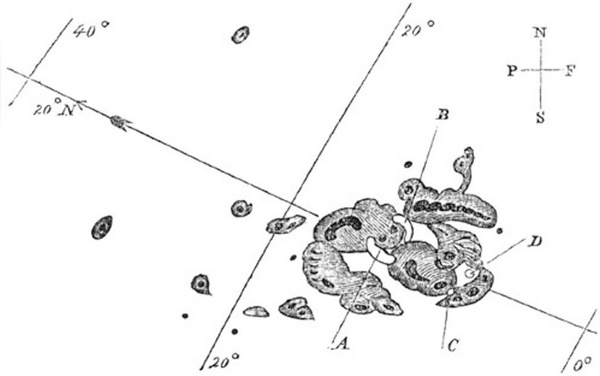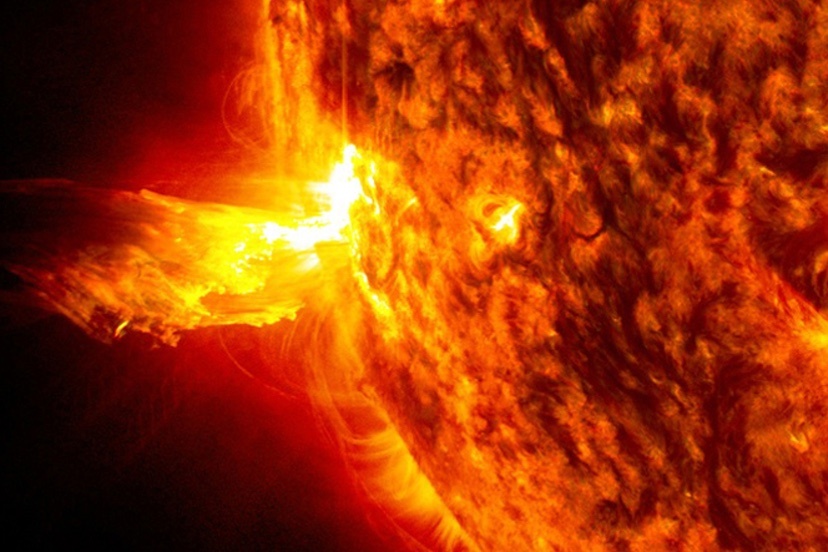On June 20, 2013, an area on the Sun’s surface erupted, sending out a coronal mass ejection (CME) that propelled billions of tons of charged particles into space. The storm reached Earth about two days later.
Most of us didn’t even notice. We were busy watching the Miami Heat beat San Antonio Spurs, 95-88 in Game Seven of the NBA Finals.
If we weren’t into basketball, we may have been surprised to hear that Senator Lisa Murkowski (R-Alaska) had became the Senate’s third Republican to publicly endorse same-sex marriage.
Behind our backs, the Sun was churning out a storm of charged particles.
Everybody talks about climate change these days, either because we think humankind might possibly prevent it from happening… or because we think humans are too stupid and selfish to keep it from happening… or because we think it’s a fictitious invention by global leaders to cram alternative energy down our throats.
But few people talk about, or think about, solar weather. Which I gather is a very real thing — maybe more real than climate change? So I’ve decided to encourage the conversation.
According to current theory, our Sun is essentially a very large hydrogen bomb that has been exploding for maybe 5 billion years and will continue exploding for maybe another 5 billion years. That means, speaking in terms of astrological time, the Sun is about the age where most men go through a midlife crisis.
Evidence of that ongoing crisis are the Sun’s tendency to emit coronal mass ejections, better known to solar weather experts as “CMEs”. These events send out billions of tons of charged particles, which can reach Earth maybe two days later, if we happen to be in the ‘line of fire’.
Thanks to a protective magnetic field surrounding the Earth, the waves of particles from a solar storm typically cannot pass through the atmosphere and harm humans and other lifeforms.
Typically.
But they can affect electronic systems… in orbiting satellites, and on the ground.
Unfortunately, the “electronic systems” that can be affected by a particularly bad solar storm, tend to be everywhere these days… in our offices, cars, phones, cash registers, heating systems, schools, water and sewer treatment plants, hospitals, fire engines…
You get the picture. Everything nowadays relies on electronics. My washing machine relies on electronics.
Curiously enough, I could hear my washing machine running when I came upon an article about the ‘Carrington Event’.
In August 1859, scientists around the world watched with fascination as the number of sunspots on the solar disk grew. Among them was Richard Carrington, an amateur astronomer in a small town near London.

On September 1, as Carrington was sketching the sunspots, he was blinded by a flash of light that lasted about five minutes. A major coronal mass ejection. a burst of magnetized plasma from the sun’s upper atmosphere, the corona. In less than a day, the CME had traversed the 93 million miles (150 million km) between the sun and Earth and unleashed its force on the Earth’s electrical systems.
We didn’t have much in the way of electrical systems in 1859. Basically, we had one significant system. The telegraph system.
According to scientists, the Carrington Event sparked a huge geomagnetic storm that wreaked havoc with telegraph communications around the world. Sparks came showering from telegraph machines, operators receiving electric shocks and papers were set ablaze by the rogue sparks. When telegraph workers returned to work the following day, they found it impossible to transmit or receive dispatches. American Telegraph Company employees found they could unplug their batteries and transmit telegraph messages to Portland, Maine, using only the electricity lingering in the atmosphere.
Carrington put two and two together (something scientists often do) and theorized that the solar flare he’d seen had caused the massive geomagnetic disturbance. Thus, the solar storm of 1859 is now known as the Carrington Event in his honor.
A dubious honor, it seems to me.
Minor CME events take place on a regular basis, and are typically related to increased sunspot activity. Sunspot activity rises and falls on an 11-year cycle, and we’re currently approaching the next solar maximum, in 2025.
Some scientists think the Earth will someday experience a CME similar to the Carrington Event, that will destroy electronic systems worldwide, including communications satellites, and basically shut down human civilization for several years.
If it happens next year, I personally plan to blame the President. Whoever that might be.

